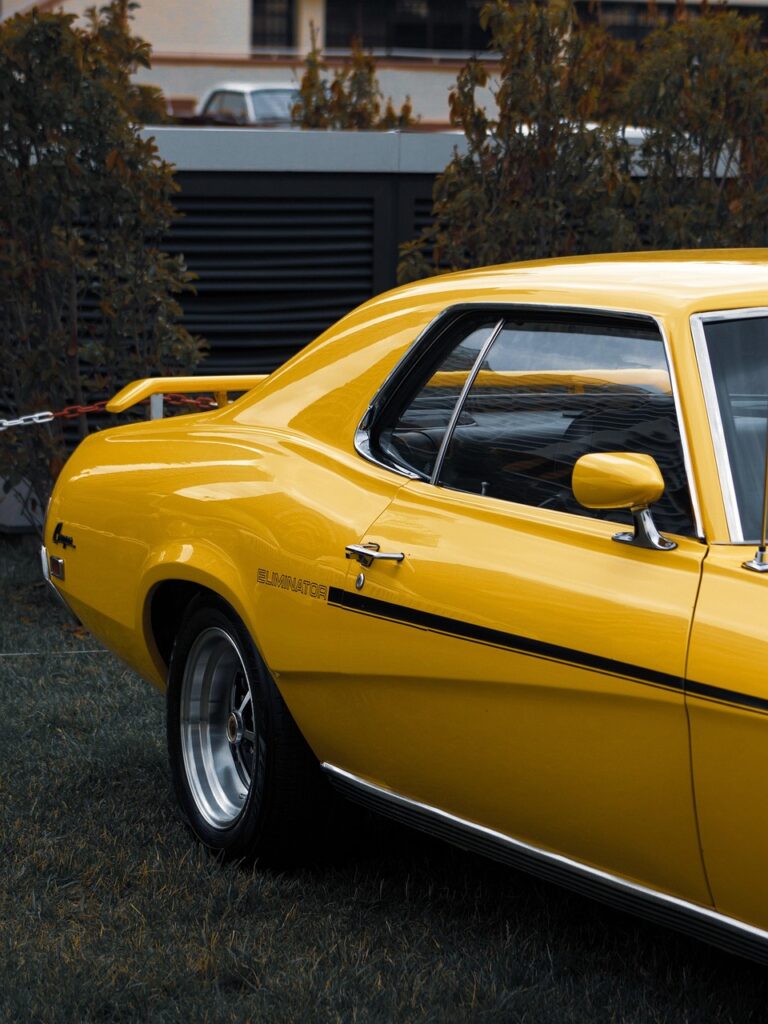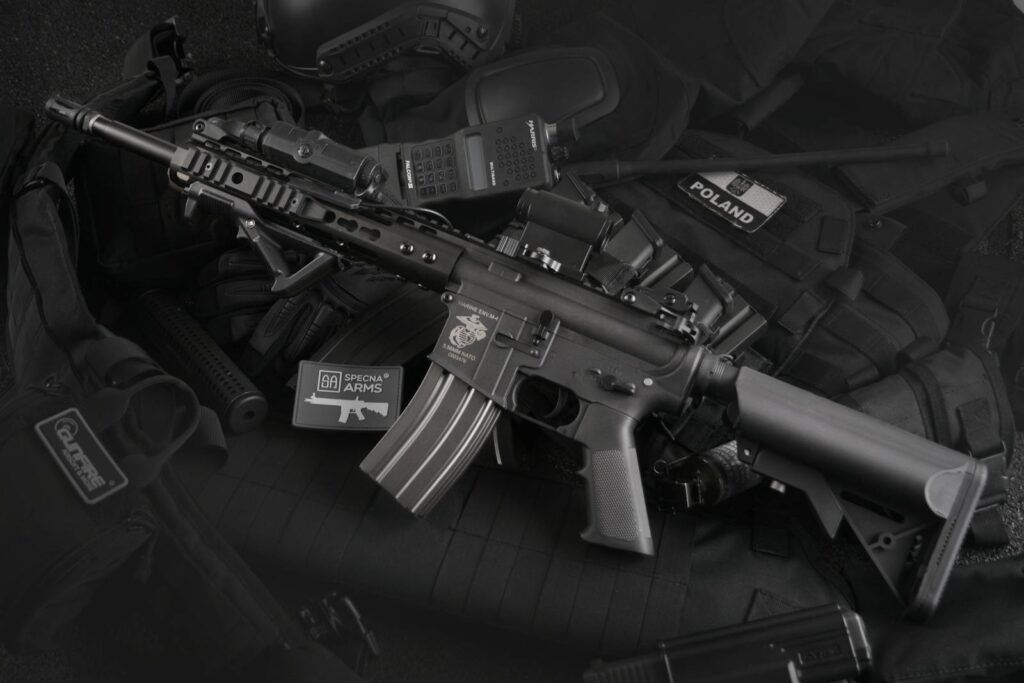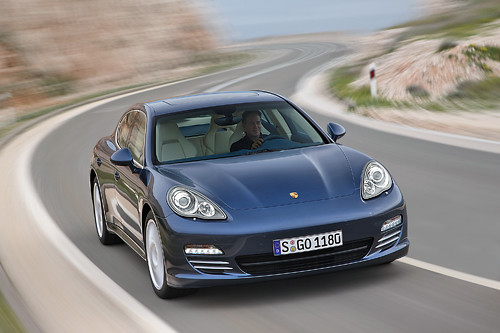
Winter is an unyielding force for vehicles, especially in regions where snow, ice, and road salt are common adversaries. The seasonal onslaught can lead to rapid deterioration, mechanical issues, and the dreaded specter of rust, which silently eats away at a vehicle’s structure and value. For consumers in cold climates, choosing the right SUV isn’t just about comfort or performance; it’s a critical decision that impacts long-term safety, reliability, and ultimately, your wallet.
While many SUVs project an image of rugged capability, their true resilience against the elements varies significantly. Some models are meticulously engineered with protective features like advanced all-wheel-drive systems, high ground clearance, and robust underbody coatings designed to withstand repeated exposure to corrosive road salt. These vehicles prove their worth by maintaining their integrity and performance even after enduring multiple brutal winters.
However, not all vehicles are created equal when it comes to cold-weather endurance. Certain popular SUVs, despite their initial appeal, possess design vulnerabilities or material choices that render them surprisingly susceptible to rust and accelerated wear once the snow begins to fall. Understanding these distinctions is paramount for any savvy buyer looking to make an informed investment, ensuring their vehicle remains a dependable asset rather than a costly rust bucket. In this comprehensive guide, we delve into ten popular SUVs, highlighting both the winter champions and those that struggle, helping you identify which models are truly built to brave the harshest cold-weather challenges.
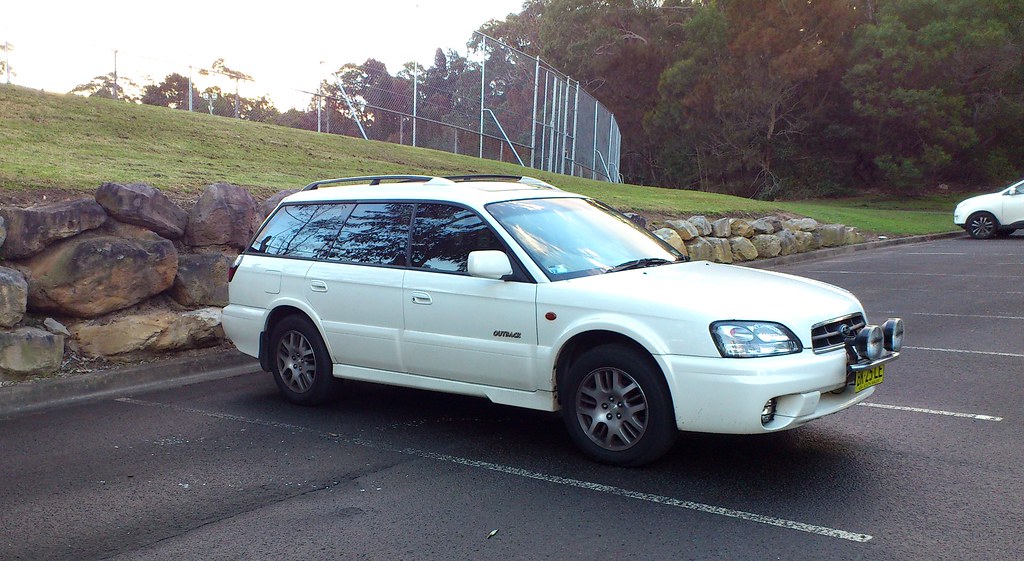
1. **Subaru Outback**The Subaru Outback has long been heralded as a top contender for drivers navigating snowy and icy conditions, consistently earning its stripes as a winter warrior. A cornerstone of its cold-weather prowess is its robust all-wheel-drive system, which is a significant factor in its reliability during the colder months. This system ensures the vehicle maintains exceptional stability and traction, even on the most treacherous roads, providing drivers with a confident and secure driving experience in adverse conditions.
Beyond its traction capabilities, the Outback boasts a notable advantage in its high ground clearance. This practical design feature is crucial for winter driving, allowing the vehicle to effortlessly traverse deep snow without the risk of getting bogged down or scraping its undercarriage. This elevated stance, combined with its dependable all-wheel-drive, makes it a highly capable vehicle for daily commutes or adventurous excursions in heavy snow.
Subaru’s commitment to durability extends to the materials and manufacturing processes employed in the Outback. The vehicle is constructed with long-lasting materials and features rust-resistant coatings applied during production, specifically targeting the body panels and undercarriage. This proactive approach is vital in combating the corrosive effects of road salt, which is a primary catalyst for rust in areas where roads are frequently treated to melt snow and ice. The underbody protection acts as a critical barrier, significantly reducing damage from salty roads and contributing to the Outback’s extended lifespan in harsh environments.
Inside the cabin, the Outback prioritizes winter comfort, offering features designed to enhance the driving experience in freezing temperatures. Heated seats, heated mirrors, and a powerful climate control system quickly banish the cold, making frosty mornings more bearable. Moreover, the vehicle integrates smart safety features like lane keeping assist, adaptive cruise control, and automatic emergency braking, which provide additional peace of mind and assistance when driving in poor weather conditions.
The consistent praise from owners regarding the Outback’s dependability over the years underscores its reputation as a reliable companion. Many drivers report their Outbacks running well beyond 200,000 miles with diligent care, further solidifying its standing as a smart choice for anyone seeking a vehicle that remains strong and rust-resistant through many cold, snowy seasons.
Car Model Information: 2013 Subaru Outback 2.5i Premium
Name: Subaru Outback
Caption: 2023 Subaru Outback Premium
Manufacturer: Subaru
Production: 1994–present
ModelYears: 1995–present
Assembly: Ota, Gunma
Aka: Subaru Legacy
Class: Mid-size car
BodyStyle: station wagon
Categories: All Wikipedia articles written in American English, All articles with unsourced statements, Articles containing Japanese-language text, Articles with short description, Articles with unsourced statements from April 2012
Summary: The Subaru Outback is an automotive nameplate used by the Japanese automaker Subaru for two different themed vehicles: a Legacy-derived station wagon, the Outback (1994–present, also sold as Legacy Outback (Japanese: スバル・レガシィアウトバック, Hepburn: Subaru Regashi Autobakku) in some markets), and an Impreza-derived off-road themed hatchback, the Outback Sport (1994–2011).
Most versions of the Outback wagon and Outback Sport have had all-wheel drive as standard equipment.
Get more information about: Subaru Outback
Buying a high-performing used car >>>
Brand: Subaru Model: Outback
Price: $11,998 Mileage: 96,619 mi.
Read more about: Unleash the Beast: Exploring Pickup Trucks with Unrivaled Towing and Payload Capabilities

2. **Toyota 4Runner**The Toyota 4Runner stands as a testament to robust engineering and enduring off-road capability, making it a preferred choice for individuals who demand a vehicle capable of handling both rugged terrain and extreme winter conditions. Its strong build quality is a key reason for its popularity among those facing freezing temperatures and challenging roads.
A significant contributor to the 4Runner’s winter performance is its impressive high ground clearance. This allows the SUV to navigate through deep snow with ease, preventing it from getting stuck or dragging its underbody on icy surfaces. This elevated design is particularly beneficial for drivers in regions with substantial snowfall, ensuring reliable mobility when other vehicles might falter.
The 4Runner is built upon a solid, durable frame, which provides it with exceptional strength and resilience. This robust structural foundation helps the SUV withstand the rigors of harsh winters, including the constant exposure to icy roads and rough conditions without showing premature wear. Its proven track record further reinforces trust in its long-lasting reliability, with the 4Runner consistently being one of Toyota’s most durable SUVs over many years.
Crucially, the 4Runner features a rust-resistant body design, which is a vital attribute for fending off the corrosive impacts of road salt and wet winter conditions. While road salt is essential for de-icing roads, it is notoriously damaging to vehicle metal parts. Toyota addresses this by applying special coatings that form a protective barrier between the metal components and moisture, thereby delaying the onset of rust, particularly on the undercarriage.
Inside, the 4Runner is equipped with essential comfort features for winter driving, such as heated seats and an effective climate control system. These amenities contribute significantly to driver and passenger comfort during cold months. With proper maintenance, the 4Runner is well-known for its longevity, with many owners reporting high mileage and minimal issues, even after extensive use in snowy and icy environments.
Car Model Information: 2024 Toyota 4Runner TRD Pro
Name: Toyota 4Runner
Caption: 2025 Toyota 4Runner TRD Sport (N500)
Manufacturer: Toyota
Aka: Toyota Hilux Surf (Japan, 1983–2009)
Production: October 1983 – present
ModelYears: 1984–present (US)
Class: unbulleted list
Layout: unbulleted list
Chassis: Body-on-frame
Successor: unbulleted list
Categories: 1990s cars, 2000s cars, 2010s cars, 2020s cars, All-wheel-drive vehicles
Summary: The Toyota 4Runner is an SUV manufactured by the Japanese automaker Toyota and marketed globally since 1984, across six generations. In Japan, it was marketed as the Toyota Hilux Surf (Japanese: トヨタ・ハイラックスサーフ, Hepburn: Toyota Hairakkususāfu) and was withdrawn from the market in 2009. The original 4Runner was a compact SUV and little more than a Toyota Hilux pickup truck with a fiberglass shell over the bed, but the model has since undergone significant independent development into a cross between a compact and a mid-size SUV. All 4Runners have been built in Japan at Toyota’s plant in Tahara, Aichi, or at the Hino Motors (a Toyota subsidiary) plant in Hamura.
The name “4Runner” was created by copywriter Robert Nathan with the Saatchi & Saatchi advertising company as a play on the term “forerunner”. The agency held contests to invent new names for Toyota’s forthcoming vehicles. According to Toyota, the “4” described the vehicle’s 4-wheel drive system while “Runner” was a reference to its all-terrain capabilities and how it could “run” off-road.
For some markets, the Hilux Surf was replaced in 2005 by the lower cost but similar Fortuner, which is based on the Hilux platform.
As of 2021, the 4Runner is marketed in the many countries in North and South America. Many markets that did not receive the 4Runner, such as Europe and the Middle East, instead received the similarly designed Land Cruiser Prado, another SUV that shared many of the same components.
The 4Runner came in at number five in a 2019 study by iSeeCars.com ranking the longest-lasting vehicles in the US. The 4Runner had 3.9 percent of vehicles over 200,000 miles (320,000 km), according to the study.
Get more information about: Toyota 4Runner
Buying a high-performing used car >>>
Brand: Toyota Model: 4Runner
Price: $57,665 Mileage: 19,605 mi.
Read more about: Beyond 100,000 Miles: Unpacking the Longevity of 9 SUVs That Defy Early Component Failure
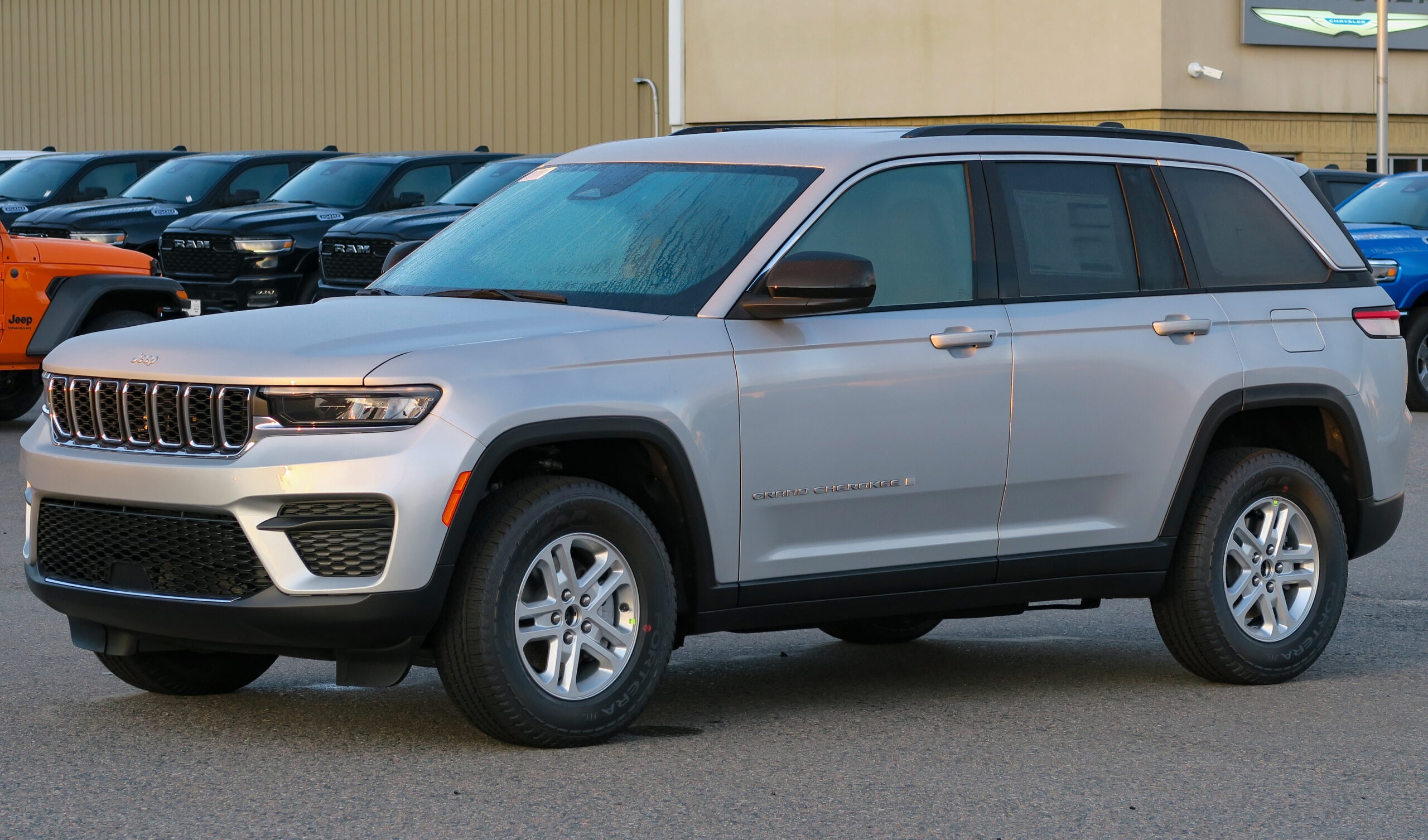
3. **Jeep Grand Cherokee**The Jeep Grand Cherokee has established itself as a long-standing and trusted SUV, particularly for those living in areas where snow and harsh weather are a regular occurrence. Its design ethos focuses on handling challenging roads and variable conditions with confidence and capability, making it a reliable choice for winter driving.
A cornerstone of the Grand Cherokee’s winter readiness is its available four-wheel-drive system. This advanced system provides superior traction on icy or slippery roads, empowering drivers to maintain control and navigate difficult terrain safely. The ease of use of this four-wheel drive system makes driving in deep snow much less daunting, and it proves invaluable when tackling uphill climbs or frozen trails during winter excursions.
Underneath its capable exterior, the Grand Cherokee is constructed with a strong and durable frame. This robust construction is fundamental to its ability to endure tough conditions without succumbing to rapid damage or premature wear. Jeep’s engineering clearly prioritizes winter use, incorporating specific features designed to safeguard the vehicle’s body and undercarriage from the detrimental effects of road salt and moisture.
While road salt poses a significant threat to many vehicles by accelerating rust formation during winter, the Grand Cherokee is specifically equipped to combat this. It utilizes rust-resistant materials and specialized coatings to actively fight against corrosion. These protective layers are instrumental in slowing down the rusting process, thereby extending the SUV’s lifespan, which is especially beneficial in states where roads are heavily salted for prolonged periods.
Driver and passenger comfort are also integral to the Grand Cherokee’s winter package. The interior offers amenities such as heated seats and a heated steering wheel, which are greatly appreciated on frigid mornings and during extended winter journeys. Furthermore, the vehicle is integrated with crucial safety technologies like traction control and emergency braking, providing an extra layer of assurance and peace of mind when operating in challenging weather conditions. The enduring legacy of Jeep in producing rugged, off-road capable vehicles further strengthens the Grand Cherokee’s appeal as a dependable option for reliable winter performance.
Car Model Information: 2025 Alfa Romeo Stelvio Sprint
Name: Jeep Grand Cherokee
Manufacturer: Jeep
Production: 1992–present
ModelYears: 1993–present
Class: unbulleted list
BodyStyle: sport utility vehicle
Layout: unbulleted list
Chassis: Vehicle_frame#Uniframe
Categories: 2000s cars, 2010s cars, 2020s cars, All-wheel-drive vehicles, All Wikipedia articles written in American English
Summary: The Jeep Grand Cherokee is a range of mid-sized sport utility vehicles produced by American manufacturer Jeep. At its introduction, while most SUVs were still manufactured with body-on-frame construction, the Grand Cherokee has used a unibody chassis from the start.
Get more information about: Jeep Grand Cherokee
Buying a high-performing used car >>>
Brand: Jeep Model: Grand Cherokee
Price: $54,000 Mileage: 889 mi.
Read more about: Beyond the Showroom Shine: 15 Car Brands and Models Driving Experts Would Never Buy – And Why You Shouldn’t Either
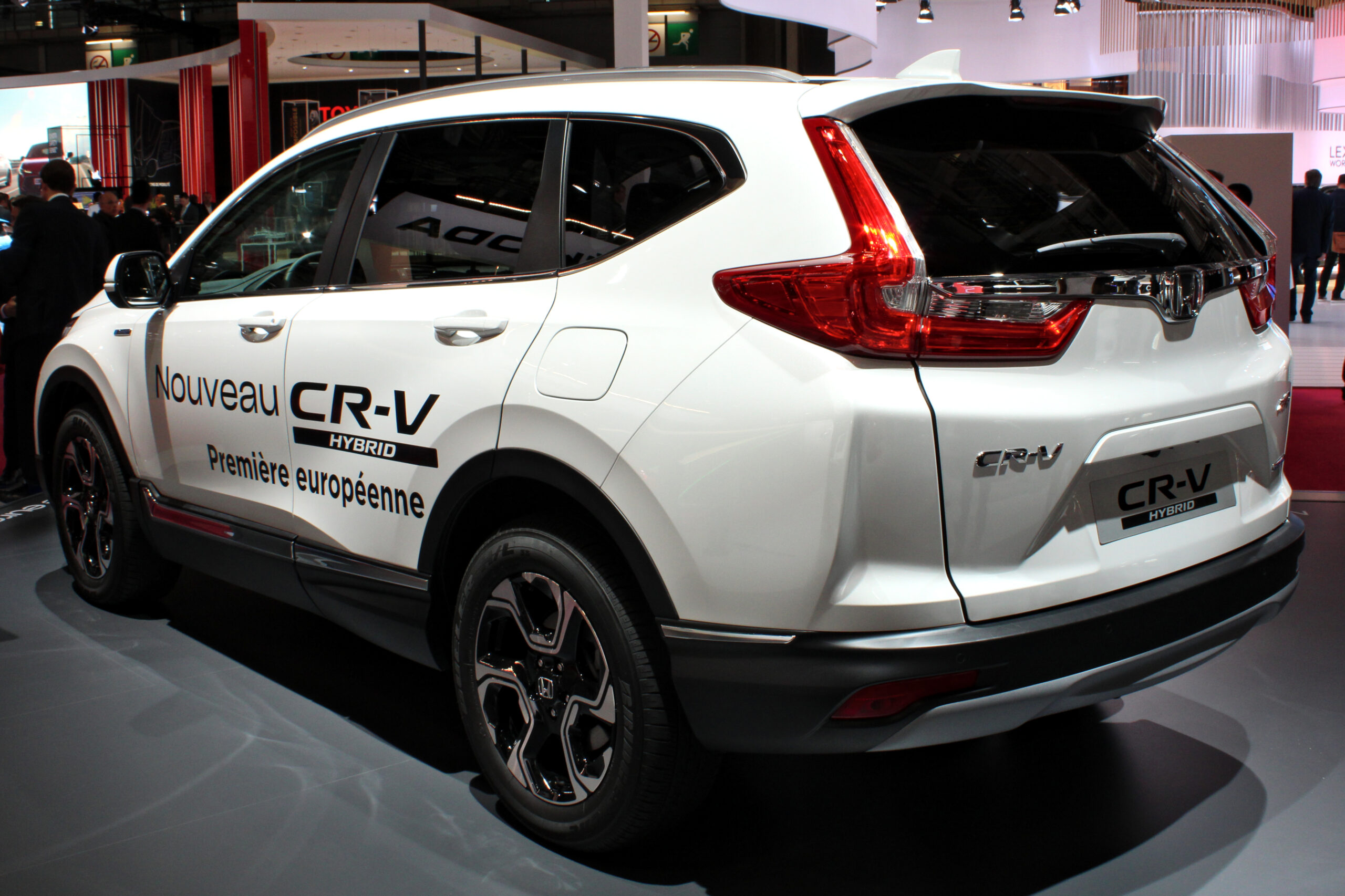
4. **Honda CR-V**The Honda CR-V is a highly regarded compact SUV, celebrated by many for its reliability, user-friendly driving dynamics, and consistent safety across a spectrum of weather conditions. It has cultivated a reputation as a dependable choice for everyday use, proving its mettle in diverse environments, including challenging winter scenarios.
A key feature that bolsters the CR-V’s winter performance is its available all-wheel-drive system. This intelligent system plays a crucial role in maintaining the SUV’s stability when roads are slick with snow or ice, effectively distributing power to all four wheels to optimize grip. This enhanced traction instills greater confidence in drivers, especially when executing turns or braking on slippery surfaces.
The CR-V also boasts an efficient heating system, capable of rapidly warming the cabin and effectively defrosting windows on cold winter mornings. Honda’s thoughtful design extends to winter comfort, with many models offering heated seats and mirrors, significantly easing the burden of freezing temperatures for occupants. These practical amenities contribute to a more pleasant and safer winter driving experience.
Regarding rust, a pervasive concern in snowy regions, the CR-V performs commendably. Its body is constructed using rust-resistant materials specifically chosen to withstand the corrosive impact of road salt and moisture. Furthermore, the vehicle’s undercarriage is treated with a protective coating, specifically designed to inhibit rust formation. This meticulous attention to rust prevention contributes significantly to the CR-V’s longevity, particularly in areas where roads remain salted for several months out of the year.
Owners residing in cold climates frequently praise the CR-V for its impressive durability through numerous winters, often reporting minimal rust development even after years of consistent use. Beyond its cold-weather fortitude, the CR-V also delivers on fuel economy and offers a smooth, comfortable ride, making it a well-rounded and smart choice for consumers seeking both practicality and robust cold-weather performance. Honda’s long-standing reputation for manufacturing durable vehicles further enhances the CR-V’s value proposition, with many models reliably exceeding 200,000 miles with routine care.
Read more about: Track Day Champions on a Budget: 11 Bargain Sports Cars That Redefine Affordable Performance
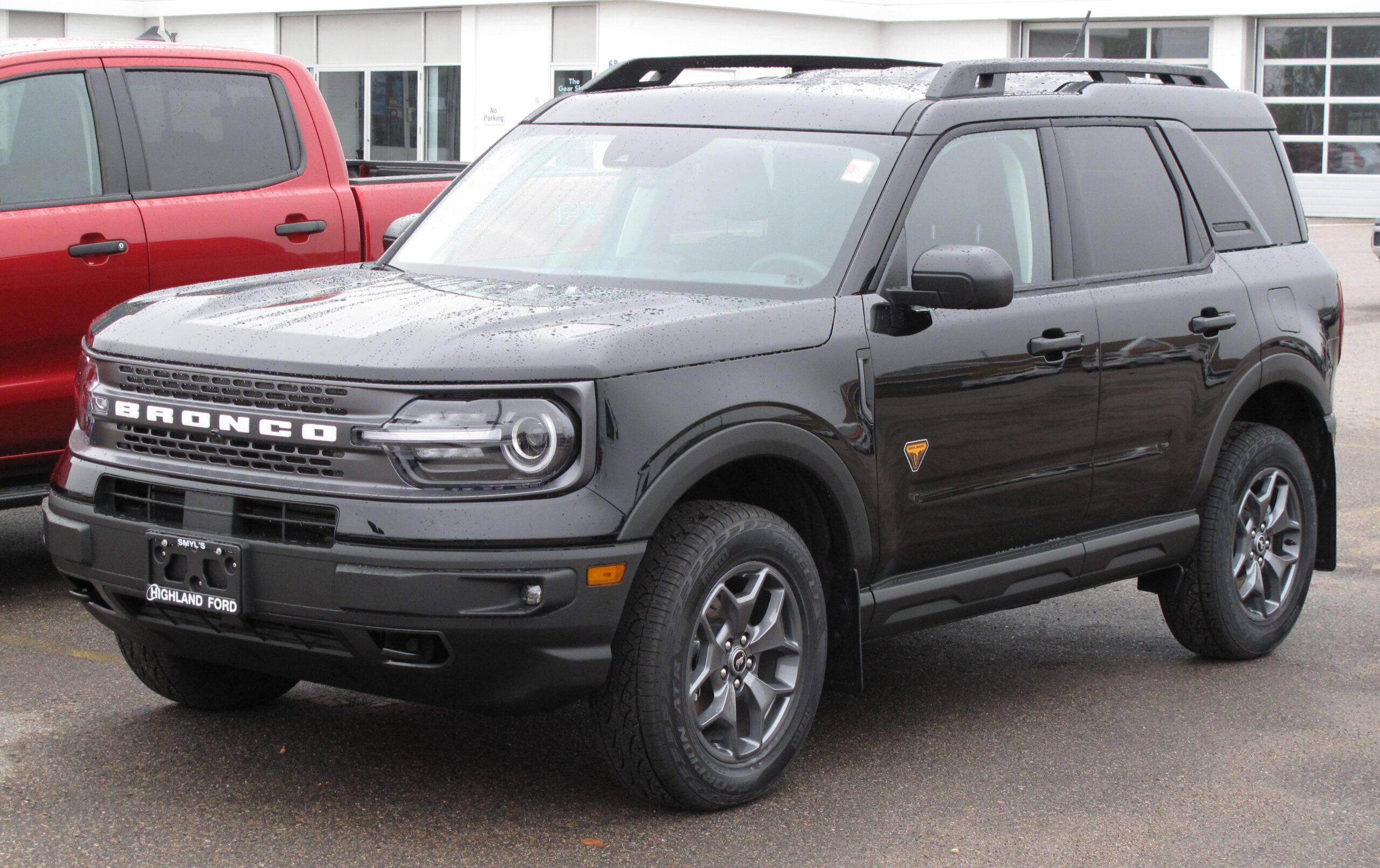
5. **Ford Bronco**The Ford Bronco, reborn for a new generation of adventurers, is designed not just for rugged outdoor excursions but also to excel in the demanding conditions of harsh winters, characterized by snow, ice, and freezing temperatures. Its inherent toughness and specialized features make it a formidable contender when facing severe cold.
Central to the Bronco’s impressive winter capability is its advanced four-wheel-drive system. This sophisticated system provides exceptional grip on slippery roads, ensuring drivers maintain authoritative control, whether navigating icy highways or challenging snowy trails. It is particularly effective for ascending snow-covered hills or powering through deep snowdrifts, making the Bronco an intelligent choice for individuals residing in regions with extended winter seasons.
The Bronco distinguishes itself with a strong and rugged body, meticulously engineered to endure rough roads, heavy snowfall, and the biting cold without premature wear or breakdown. Ford has further enhanced its winter resilience by integrating substantial underbody protection. This crucial addition shields vital components from potential damage and, critically, acts as a barrier to prevent salt and moisture from reaching sensitive metal areas, thereby mitigating the risk of rust.
Acknowledging that rust is a significant adversary in winter, especially where road salt is extensively used, the Bronco’s design incorporates special coatings specifically formulated to deter rapid rust formation. This proactive rust prevention is a key factor in its long-term durability in corrosive environments.
Drivers in cold climates will also appreciate the Bronco’s high ground clearance, a feature that enables it to clear snow piles effectively without getting stuck or sustaining undercarriage scrapes. Furthermore, comfort has not been overlooked in the Bronco’s rugged design; many models come equipped with heated seats, powerful heaters, and other amenities designed to keep occupants warm and comfortable in freezing weather. The Bronco’s compelling blend of brute strength and intelligent, winter-specific features positions it as a truly dependable, cold-weather-ready SUV, confident in its ability to defy rust and perform reliably in the toughest conditions.
Car Model Information: 2022 Ford Bronco Base
Name: Ford Bronco
Caption: 2021 Ford Bronco Outer Banks (4-door)
Manufacturer: Ford Motor Company
Production: 1965–1996,2021–present
Class: Compact SUV
Layout: Front-engine, four-wheel-drive
BodyStyle: SUV
Successor: Ford Expedition
ModelYears: 1966–1996,2021–present
Categories: 1970s cars, 1980s cars, 1990s cars, 2020s cars, All-wheel-drive vehicles
Summary: The Ford Bronco is a model line of SUVs manufactured and marketed by Ford. The first SUV model developed by the company, five generations of the Bronco were sold from the 1966 to 1996 model years. A sixth generation of the model line was introduced for the 2021 model year. The nameplate has been used on other Ford SUVs, namely the 1984–1990 Bronco II compact SUV, the 2021 Bronco Sport compact crossover, and the China-only 2025 Bronco New Energy.
Originally developed as a compact off-road vehicle using its own chassis, the Bronco initially competed against the Jeep CJ-5 and International Scout. For 1978, Ford enlarged the Bronco, making it a short-wheelbase version of the F-Series pickup truck; the full-size Bronco now competed against the Chevrolet K5 Blazer and Dodge Ramcharger.
Following a decline in demand for large two-door SUVs, Ford discontinued the Bronco after the 1996 model year, replacing it with the four-door Ford Expedition; followed by the larger Ford Excursion. After a 25-year hiatus, the sixth-generation Bronco was reintroduced in 2021 as a mid-size two-door SUV. It is also offered as a full-size four-door SUV with a 16 in (41 cm) longer wheelbase. It competes directly with the Jeep Wrangler as both a two-door and a four-door (hardtop) convertible.
From 1965 to 1996, the Ford Bronco was manufactured by Ford at its Michigan Truck Plant in Wayne, Michigan, where it also manufactures the sixth-generation version.
Get more information about: Ford Bronco
Buying a high-performing used car >>>
Brand: Ford Model: Bronco
Price: $36,911 Mileage: 20,844 mi.
Read more about: Mastering Your Ride: A Comprehensive Guide to Selecting the Perfect Wheel and Tire Combination for Optimal Performance and Safety
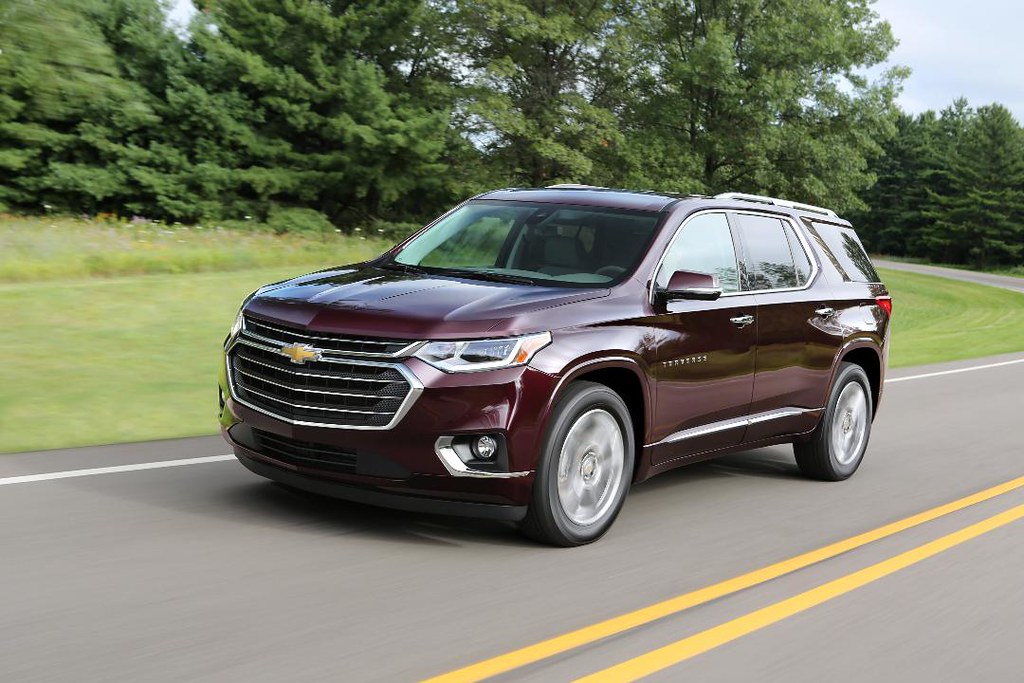
6. **Chevrolet Traverse**The Chevrolet Traverse is a popular SUV, frequently chosen by families for its generous interior space and smooth, comfortable ride. Its reputation for comfort and roominess makes it a common choice for both daily commuting and longer journeys. However, despite these attractive qualities, the Traverse presents notable challenges when exposed to the harsh realities of cold and snowy climates, particularly concerning its susceptibility to rust.
One of the most significant concerns for Traverse owners in winter regions is its tendency to rust more quickly than many other SUVs. The primary areas where corrosion typically manifests are the undercarriage and the wheel wells. These components are directly and repeatedly exposed to road salt, which is extensively used to de-ice roads during winter months. While essential for improving road safety, this salt is notoriously corrosive to vehicle metals.
When road salt adheres to the metal surfaces beneath the SUV, it initiates a corrosive process that, over time, can lead to significant damage. Once rust begins to form, it has the potential to spread progressively to other parts of the vehicle, affecting not only its cosmetic appearance but, more importantly, its structural integrity and overall safety. Several owners in colder states have reported the premature appearance of rust, sometimes after as few as just a few winters, even with diligent regular washing during snowy seasons.
Specifically, the wheel wells of the Traverse appear to be particularly adept at collecting and retaining moisture and salt. This characteristic makes them a prevalent site for rust to develop if not meticulously and frequently cleaned. While Chevrolet has implemented various updates throughout the years, reports suggest that rust continues to be a persistent problem for many models, raising concerns for drivers who intend to own their Traverse for an extended period.
Without additional protective measures, such as undercoating or dedicated rust protection treatments, the problem can escalate significantly. While consistent washing and supplementary undercoating can offer some degree of mitigation, they do not always provide a complete safeguard against rust. Consequently, even though the Traverse excels in offering ample space and comfort, prospective buyers in snowy regions should exercise caution, as these rust issues can diminish the vehicle’s long-term value and potentially shorten its operational lifespan.
Car Model Information: 2018 Chevrolet Traverse Premier
Name: Chevrolet Traverse
Caption: Second generation facelift model
Manufacturer: General Motors
Production: 2008–present
ModelYears: 2009–present
Class: Full-size crossover SUV
Layout: ubl
Predecessor: Chevrolet TrailBlazer
Categories: 2010s cars, 2020s cars, All-wheel-drive vehicles, All Wikipedia articles written in American English, All articles with dead external links
Summary: The Chevrolet Traverse is a full-size crossover SUV with three-row seating built by General Motors produced since the 2009 model year. It is built on the same platform as the GMC Acadia and Buick Enclave, known as the Lambda platform for the first generation, and the C1XX for the second generation. It also shares the C1XX platform with the Cadillac XT6. It is the successor to the TrailBlazer body-on-frame SUV and the Uplander minivan.
The second-generation model debuted in showrooms in the middle of 2017. Starting with the 2019 model year, the Traverse was slotted above the new mid-size Chevrolet Blazer as part of Chevrolet’s plans to expand its SUV lineup.
The Traverse name was originally used for a concept car at the 2003 North American International Auto Show in Detroit, but that concept gave way when the Equinox launched for the 2005 model year.
Get more information about: Chevrolet Traverse
Buying a high-performing used car >>>
Brand: Chevrolet Model: Traverse
Price: $10,000 Mileage: 231,506 mi.
Read more about: GM’s Dual Fire Risk Recalls: Your Essential Guide to Over 600,000 Affected Trucks and SUVs
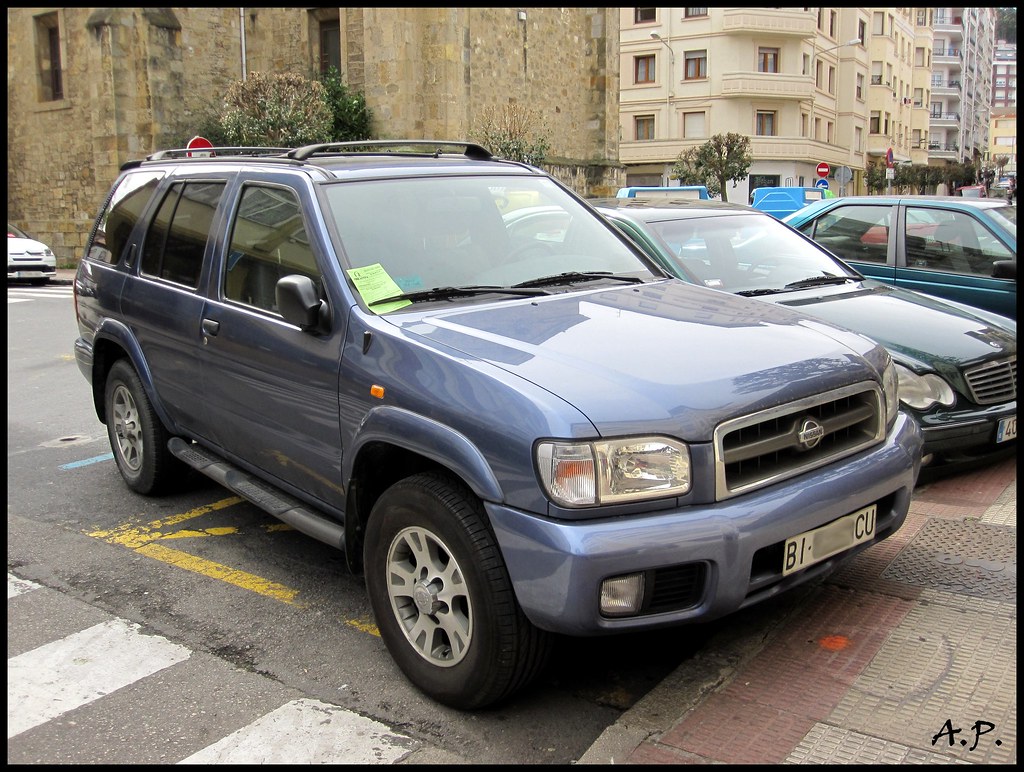
7. **Nissan Pathfinder**The Nissan Pathfinder is widely recognized for its robust performance and an array of family-friendly features, positioning it as a capable vehicle for both off-road excursions and comfortable passenger transport across diverse terrains. However, its perceived strength in performance does not fully translate to resilience in demanding winter conditions, where it notably falls short, particularly concerning its susceptibility to rust.
A major drawback of the Pathfinder in cold, wet environments is its propensity to develop rust in specific areas. Corrosion is most frequently observed on the rear quarter panels and along the underside of the vehicle. These particular locations are prone to accumulating road salt and moisture, which linger and interact with the metal surfaces throughout the colder months. Road salt, indispensable for melting ice, simultaneously acts as a primary catalyst for metal degradation.
Even when owners diligently wash their vehicles, rust can still emerge, largely because certain parts of the Pathfinder’s underbody and hidden crevices are challenging to access and clean thoroughly. The undercarriage, encompassing critical components such as the exhaust system and various frame parts, appears to be the most vulnerable. If left unaddressed, this progressive rust can severely compromise the SUV’s driving dynamics and significantly shorten its overall lifespan.
The Pathfinder’s off-road capabilities might initially suggest a winter-ready vehicle, yet its intrinsic materials and rust protection applications do not stand up as effectively against corrosive elements as those found in some other SUVs. The exterior paint and protective sealants may degrade faster than anticipated, leaving the underlying metal exposed and vulnerable to the damaging effects of salt, ice, and slush.
To combat this pervasive issue, some owners opt to apply supplementary undercoating or rustproofing treatments. While these measures can certainly help in slowing down the corrosion process, they frequently do not provide a definitive solution or entirely prevent rust formation. For families residing in regions with significant snowfall, this vulnerability is a crucial consideration, as a truly dependable SUV must also possess strong rust resistance to serve as a sound long-term investment. The Nissan Pathfinder, despite its attributes, struggles in this critical aspect, potentially leading to reduced value and compromised safety over time.
Car Model Information: 2018 Nissan Pathfinder SL
Name: Nissan Pathfinder
Caption: 2023 Nissan Pathfinder Platinum 4WD (R53, US)
Manufacturer: Nissan
Production: 1985–present
Layout: unbulleted list
Chassis: unbulleted list
Predecessor: unbulleted list
Successor: unbulleted list
Categories: 1990s cars, 2000s cars, 2010s cars, 2020s cars, All-wheel-drive vehicles
Summary: The Nissan Pathfinder is a range of sport utility vehicles manufactured by Nissan since 1985. Until the third-generation model, the Pathfinder is based on Nissan’s compact pickup truck platform which it shares with the Navara/Frontier.
The Pathfinder was marketed as the Nissan Terrano (Japanese: 日産・テラノ, Hepburn: Nissan Terano) outside North America. Beginning in 2004, the vehicles were marketed globally as the Pathfinder.
In 2012, the R52 series Pathfinder was released as a three-row crossover SUV based on the unibody Nissan D platform, moving away from the body-on-frame chassis format. The role of a mid-size body-on-frame SUV in Nissan’s global lineup was passed to the Terra/X-Terra, which was released in 2018 and based on the D23 series Navara.
Get more information about: Nissan Pathfinder
Buying a high-performing used car >>>
Brand: Nissan Model: Pathfinder
Price: $17,961 Mileage: 50,723 mi.
Read more about: Road Test Confessions: 11 SUVs Reviewers Allegedly Love, But We’d Never Buy (And Here’s Why)
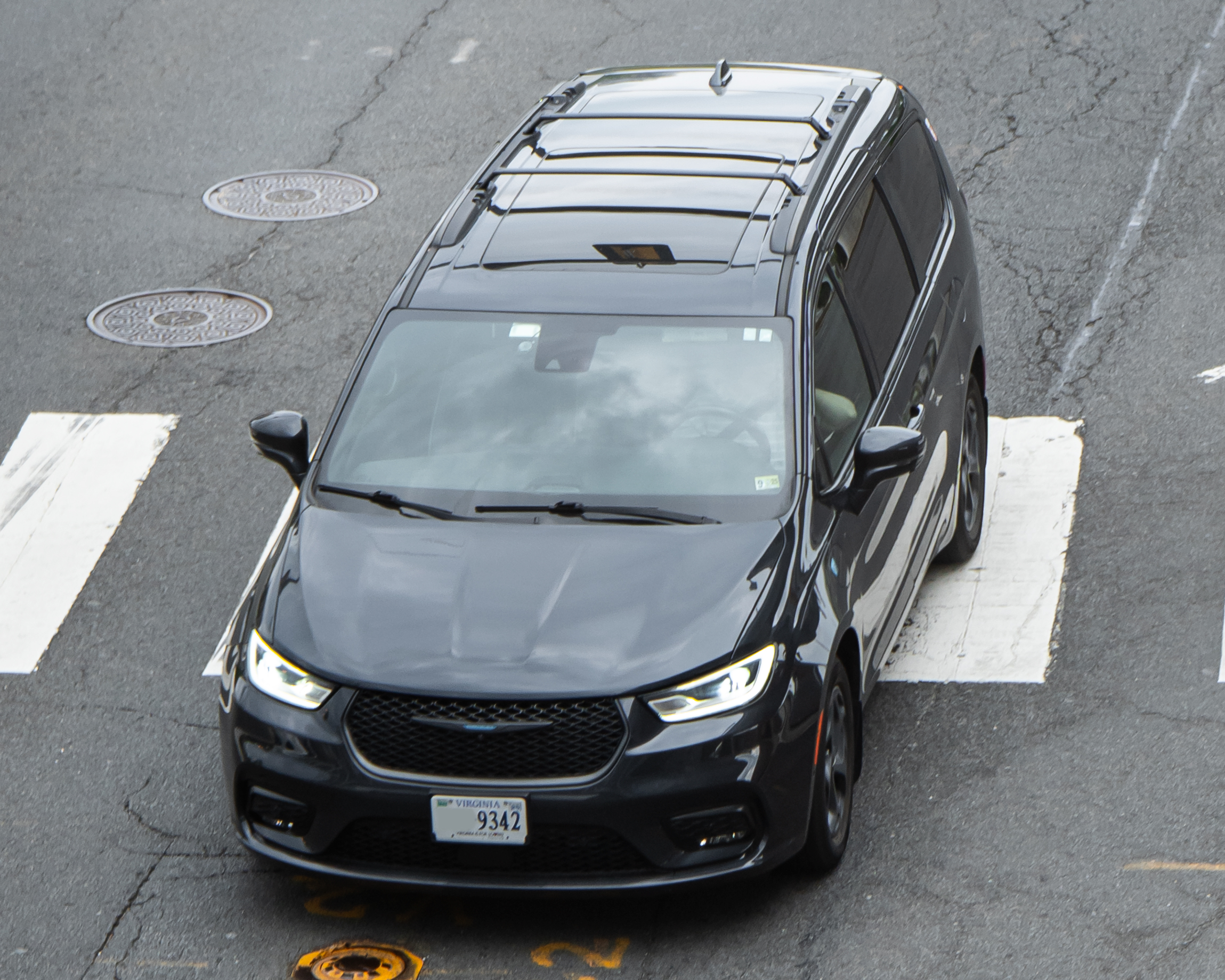
8. **Chrysler Pacifica**The Chrysler Pacifica stands out as a highly favored minivan, celebrated for its expansive interior and practical, family-oriented features. It has earned its place as a popular alternative to traditional SUVs, owing to its exceptional versatility and the comfortable environment it provides for occupants. However, when evaluated against the rigors of winter conditions, the Pacifica reveals some significant vulnerabilities.
One of the most concerning issues for the Pacifica in cold, snowy climates is the ease with which its body and frame can succumb to rust. This corrosion problem is frequently observed under the wheel wells and in other areas of the vehicle that are directly exposed to road salt. The salt applied to roads during winter is a powerful corrosive agent that can swiftly initiate degradation if the vehicle’s components are not adequately protected.
The rust prevention features integrated into the Pacifica’s design often prove insufficient to counteract this pervasive problem. In snowy regions where road salt is a regular fixture, this can evolve into a serious and ongoing issue for vehicle owners. Road salt, while crucial for enhancing road safety by clearing ice and snow, simultaneously inflicts considerable damage upon the underbody of vehicles.
If the Pacifica is not subjected to consistent cleaning routines or treated with specialized rust preventative applications, its metal components are highly susceptible to corrosion. The vehicle’s body and frame are particularly vulnerable due to a design that does not fully shield against salt damage, often leading to the formation of rust spots far sooner than anticipated by owners.
Reports from some owners indicate that rust can begin to appear after just a few winters, significantly compromising the minivan’s long-term durability and potentially leading to increased maintenance and repair costs. While the Pacifica undoubtedly delivers a smooth ride and impressive interior spaciousness, rust remains a notable drawback in harsh winter climates. Families in colder areas might find it necessary to invest in additional rustproofing or protective coatings to safeguard their vehicle against premature corrosion and ensure its longevity.
Car Model Information: 2017 Chrysler Pacifica Touring-L Plus
Categories: All set index articles, Articles with short description, Chrysler vehicles, Set index articles on cars, Short description is different from Wikidata
Summary: Chrysler Pacifica is a nameplate used by Chrysler for a variety of vehicles.
The name was first used on a luxury minivan concept vehicle in 1999, and later a crossover concept in 2002.
From 2004 to 2008, it was used on a mid-size crossover, and since the 2017 model year, it has been used as the Town & Country minivan’s replacement.
Vehicles using the nameplate are:
Chrysler Pacifica concept (1999), concept minivan
Chrysler Pacifica concept (2002), concept crossover
Chrysler Pacifica (crossover) (2004–2008), production version of the 2002 concept
Chrysler Pacifica (minivan) (2017–present), Chrysler Town & Country replacement
Get more information about: Chrysler Pacifica
Buying a high-performing used car >>>
Brand: Chrysler Model: Pacifica
Price: $14,397 Mileage: 72,657 mi.
Read more about: Beyond the Horizon: The 15 Most Comfortable Cars for Long Road Trips, Reviewed by Experts
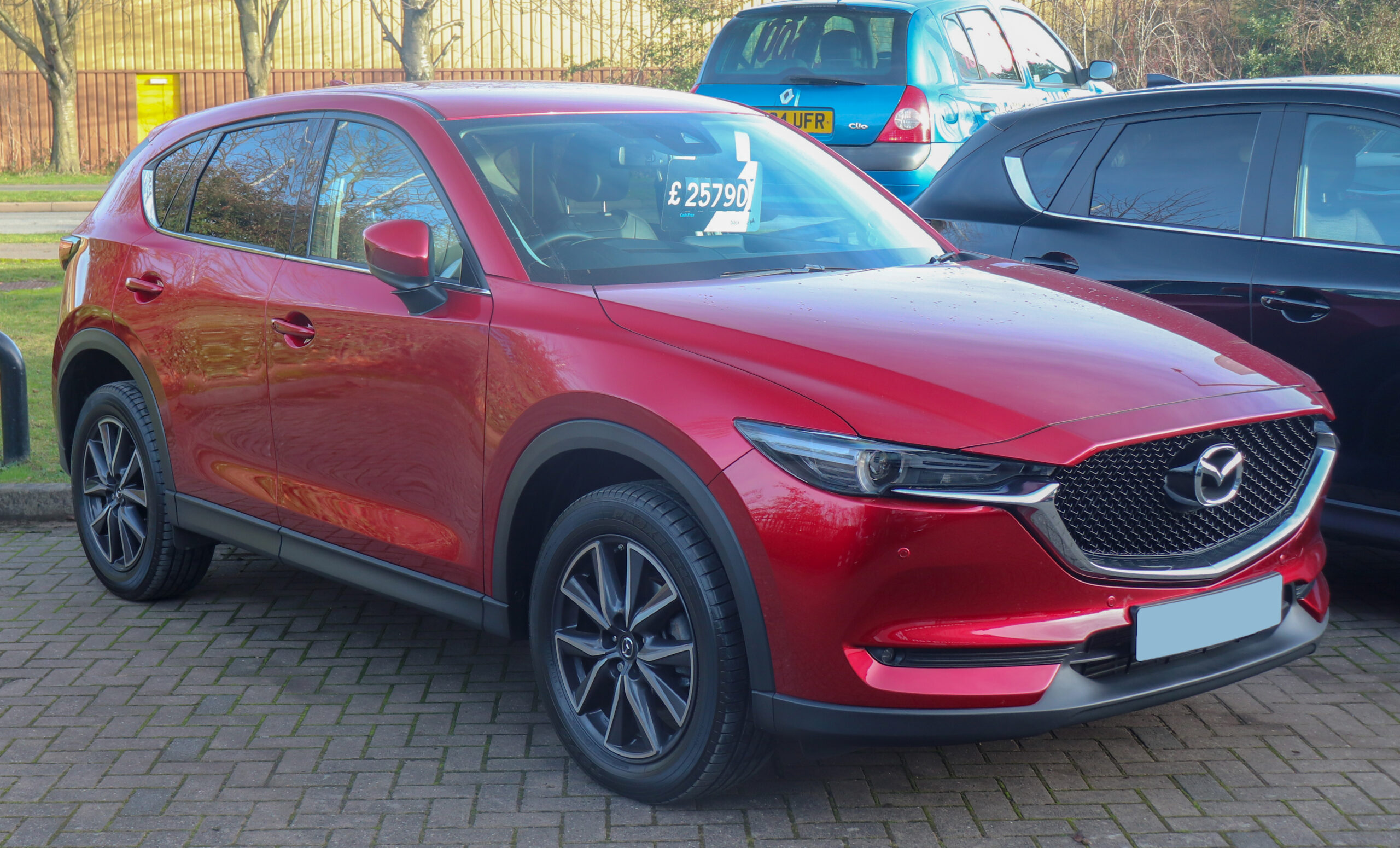
9. **Mazda CX-5**The Mazda CX-5 has garnered considerable acclaim for its agile handling and sophisticated, sporty design, making it a highly popular choice within the compact SUV segment. Its reputation for delivering an engaging driving experience and a comfortable ride is well-deserved. Yet, despite these strengths, the CX-5 exhibits certain limitations when confronted with the challenges of winter weather, most notably its heightened susceptibility to body rust compared to many of its class competitors.
The underbody of the Mazda CX-5 is particularly vulnerable to corrosion. When this area is repeatedly exposed to road salt, the metal components can rapidly begin to rust, which, if not properly addressed through vigilant maintenance, can lead to substantial long-term damage. Road salt, while indispensable for melting snow and ice from roadways, is a significant contributor to vehicle degradation.
The salt tends to cling to the undercarriage, and if the SUV is not regularly cleaned, these accumulations can quickly foster the development of rust spots. Numerous owners in colder climates have reported the appearance of rust earlier than anticipated, particularly in underbody areas where salt and moisture are prone to accumulating and causing damage.
These rust issues can unfortunately curtail the operational lifespan of the CX-5, especially for vehicles operated in snowy regions. While the CX-5 is undoubtedly a well-engineered vehicle in terms of driving dynamics, its inherent rust resistance does not perform as robustly in areas that experience heavy snow and widespread application of road salt.
To adequately protect a Mazda CX-5 from premature rust, owners are advised to dedicate extra attention to thoroughly cleaning the undercarriage. Implementing regular washing routines, coupled with preventative treatments such as rustproofing or undercoating, can significantly help in delaying the corrosion process. While the CX-5 remains a strong option for those prioritizing driving enjoyment and aesthetic appeal, individuals residing in regions with severe winters should be fully aware of its inherent rust vulnerabilities.
Car Model Information: 2016 Mazda CX-5 Grand Touring
Name: Mazda CX-5
Caption: Second generation CX-5 (KF; 2024)
Manufacturer: Mazda
Production: 2012–present
ModelYears: 2013–present
Class: Compact crossover SUV
BodyStyle: SUV
Layout: unbulleted list
Predecessor: unbulleted list
Categories: 2020s cars, All-wheel-drive vehicles, All articles containing potentially dated statements, All articles lacking reliable references, All articles with dead external links
Summary: The Mazda CX-5 is a compact crossover SUV, produced by Mazda since 2012. A successor to both the Tribute and the slightly larger CX-7, it is Mazda’s first model to feature the “Kodo” design language and the first model to be fully developed with a range of technologies branded as Skyactiv, including a rigid, lightweight platform combined with a series of engines and transmissions to reduce emissions and fuel consumption. The car was first revealed in 2011.
Since 2019, the CX-5 is positioned above the smaller CX-30. As of 2022, depending on the region, the CX-5 is positioned right below the larger CX-50, CX-60 or the CX-8 within Mazda’s crossover SUV line-up.
Since 2014, the CX-5 has consistently been Mazda’s best-selling model globally. It achieved record sales in 2019, with 444,262 units sold worldwide. As of March 2022, cumulative sales of the CX-5 reached around 3.5 million units.
Get more information about: Mazda CX-5
Buying a high-performing used car >>>
Brand: Mazda Model: CX-5
Price: $14,980 Mileage: 93,888 mi.
Read more about: Road Test Confessions: 11 SUVs Reviewers Allegedly Love, But We’d Never Buy (And Here’s Why)
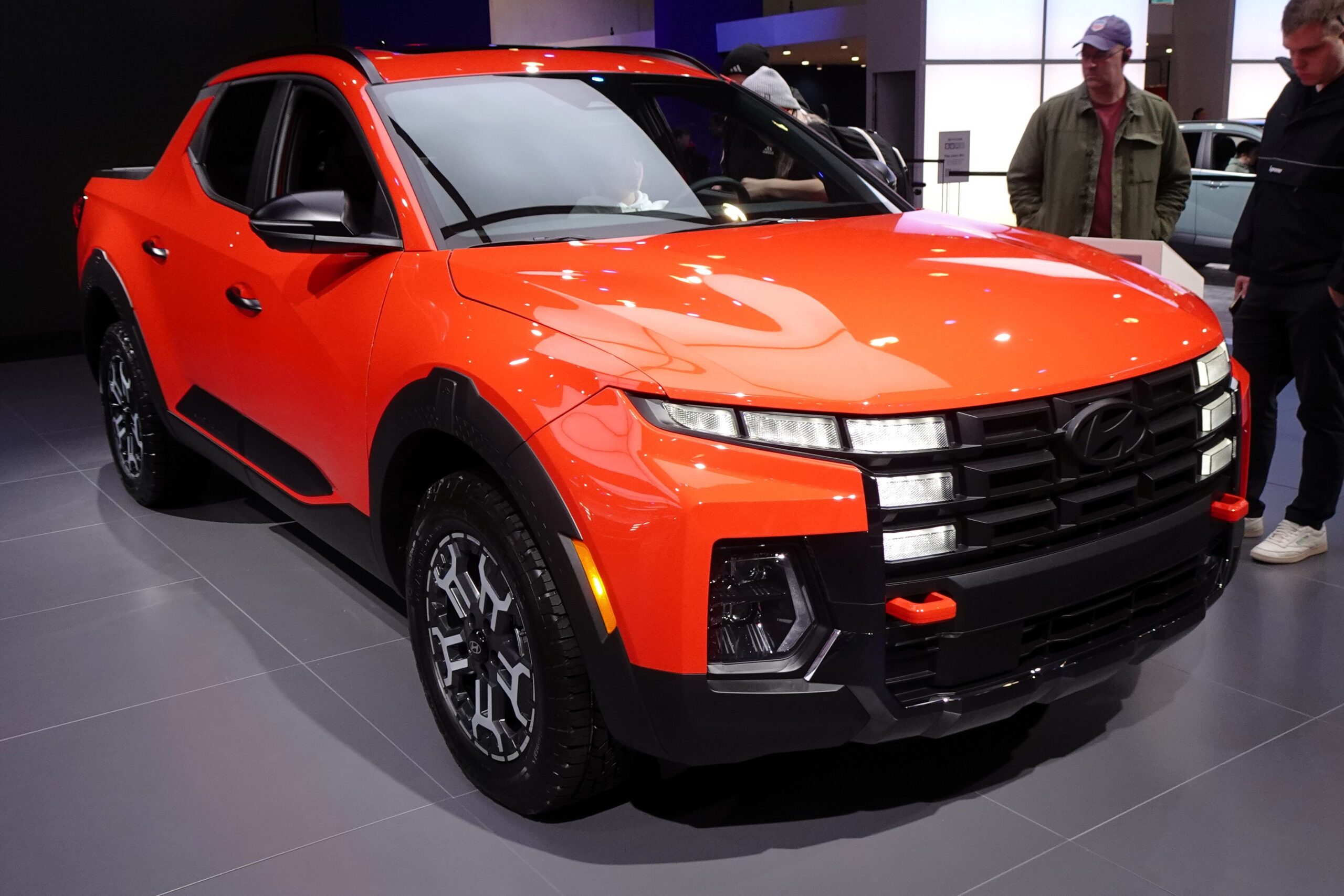
10. **Hyundai Santa Fe**The Hyundai Santa Fe is recognized as a versatile and well-rounded SUV, offering a compelling blend of comfort and reliability, making it a popular choice for many families. It is often lauded for its spacious interior, smooth ride quality, and overall value for money. However, among its many positive attributes, concerns have been raised regarding its susceptibility to rust, a problem that appears to be more pronounced in colder climates.
Rust on the Santa Fe most commonly forms on the undercarriage and around the wheel arches. These specific areas of the vehicle are subjected to the highest levels of exposure to road salt and moisture during the winter months. Road salt, while a common and effective solution for preventing ice buildup on snowy roads, is unfortunately detrimental to vehicle components, accelerating metal corrosion.
For the Santa Fe, this means that its undercarriage and wheel arches are particularly vulnerable, with signs of corrosion potentially emerging if the vehicle is not consistently and thoroughly cleaned. Many Santa Fe owners in regions that experience heavy snowfall have reported observing rust development within just a few winters of ownership, which understandably becomes a significant concern for those planning to retain their vehicle for an extended period.
To proactively combat rust, it is crucial for owners to clean the undercarriage of their Santa Fe meticulously after driving in winter conditions. Incorporating regular washes, along with applying undercoating and rustproofing treatments, can provide essential protection for the vehicle. These preventative measures are vital for extending the lifespan of the SUV in corrosive environments.
Car Model Information: 2025 Alfa Romeo Stelvio Sprint
Name: Hyundai Santa Fe
Caption: Hyundai Santa Fe Luxury (fifth generation)
Manufacturer: Hyundai Motor Company
Aka: Hyundai Maxcruz (LWB, South Korea; 2013–2019)
Production: June 2000–present
ModelYears: 2001–present
Class: unbulleted list
BodyStyle: SUV
Layout: Front-engine, front-wheel-drive,Front-engine, all-wheel-drive
Chassis: Unibody
Categories: 2010s cars, All-wheel-drive vehicles, All Wikipedia articles written in British English, All articles containing potentially dated statements, All articles lacking reliable references
Summary: The Hyundai Santa Fe (Korean: 현대 싼타페) is an automobile nameplate used by the South Korean manufacturer Hyundai since 2000, specifically for a series of crossover SUVs. It is named after the city of Santa Fe, New Mexico, and was introduced for the 2001 model year as Hyundai’s first SUV. The Santa Fe was a milestone in the company’s restructuring program of the late 1990s because the SUV was a hit with American buyers.
The Santa Fe was initially marketed as a compact crossover SUV in its first-generation. After the Tucson was introduced in 2004, marketed under that same class, the Santa Fe was later repositioned into the mid-size crossover SUV class since its second-generation launched in 2005. Through all generations, the Santa Fe has been offered in either front-wheel drive or all-wheel drive.
The third-generation Santa Fe introduced in 2012 was available in two versions, which are regular (short) and extended long-wheelbase version. The short model was sold as the Santa Fe Sport in North America (three-row seating was not available) and simply Santa Fe in global markets (three-row seating was standard or optional), while the extended long-wheelbase model is called the Santa Fe in the U.S., Santa Fe XL in Canada and called the Hyundai Maxcruz in South Korea. The fourth-generation model, which was launched in 2018, introduced hybrid and plug-in hybrid powertrain (since 2020), and the fifth-generation model, which was launched in 2023, discontinued diesel engines.
As of 2025, the Santa Fe is positioned between the smaller Tucson and the larger Palisade in Hyundai’s global crossover SUV line-up.
Get more information about: Hyundai Santa Fe
Buying a high-performing used car >>>
Brand: Hyundai Model: Santa Fe
Price: $54,000 Mileage: 889 mi.
Read more about: Spilling the Gas: Unmasking 12 Critical Engine Failure Points That Allegedly Emerge Right After Your Warranty Ends
While the Hyundai Santa Fe generally stands as a solid and dependable vehicle across many metrics, its documented susceptibility to rust should be taken seriously by prospective buyers. Drivers residing in areas with substantial snow and extensive salt usage on roads should be prepared to undertake additional maintenance steps to effectively protect their investment from the corrosive effects of winter. After all, a vehicle is often one of the most significant investments a consumer makes, second only to a home. Safeguarding this asset from premature wear, especially the insidious creep of rust, is paramount to preserving its value, reliability, and ensuring a safer driving experience for years to come. Understanding these common vulnerabilities allows for a more informed decision, empowering you to choose a crossover that truly defies the elements, rather than succumbing to them as a costly rust bucket.

